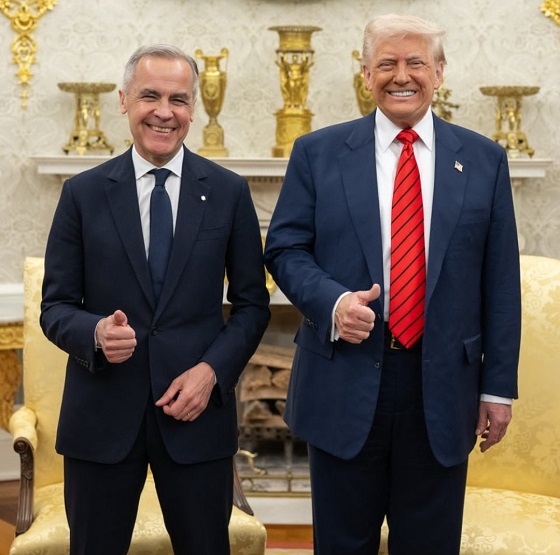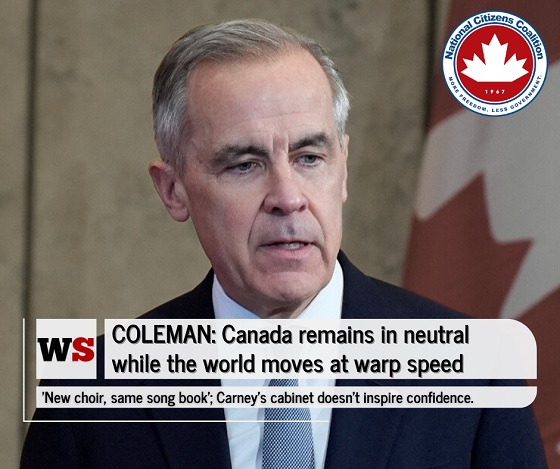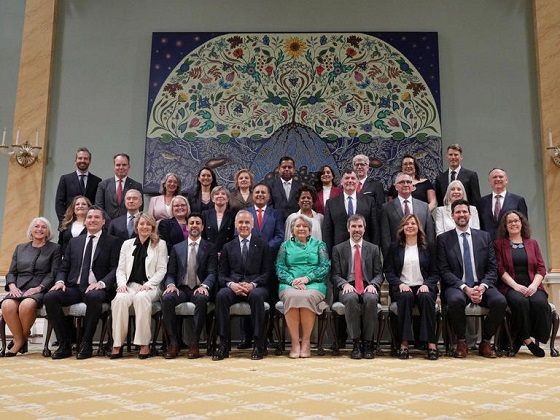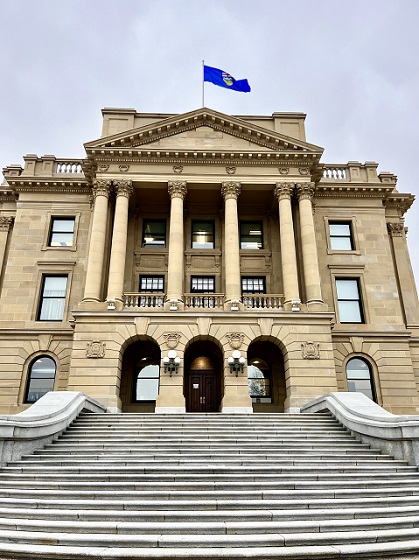Business
Who owns Canada’s public debt?
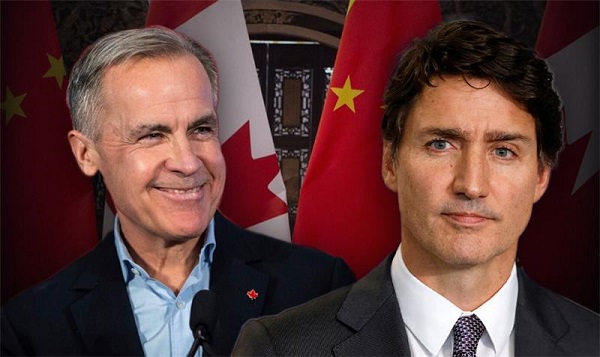

 David Clinton
David Clinton
Remember when thinking about our debt crisis was just scary?
During his recent election campaign, Mark Carney announced plans to add $225 billion (with a “b”) to federal debt over the next four years. That, to put it mildly, is a consequential number. I thought it would be useful to put it into context, both in terms of our existing debt, and of some social and political changes those plans could spark.
How much money does Canada currently owe? According to Statistics Canada’s statement of government operations and balance sheet, as of Q4 2024, that number would be nearly $954 billion. That’s compared with the $621 billion we owed back in 2015.
The Audit is a reader-supported publication.
To receive new posts and support my work, consider becoming a free or paid subscriber.
How much does interest on our current debt cost us each year? The official Budget 2024 document predicted that we’d pay around $51 billion each year to just service our debt. But that’s before piling on the new $225 billion.
We – and the governments we elect – might be tempted to imagine that the cash behind public loans just magically appears out of thin air. In fact, most Canadian government debt is financed through debt securities such as marketable bonds, treasury bills, and foreign currency debt instruments. And those bonds and bills are owned by buyers.
Who are those buyers? Many of them are probably Canadian banks and other financial institutions. But as of February 2025, according to Statistics Canada, it was international portfolio investors who owned $527 billion of Canadian federal government debt securities.
Most of those foreign investors are probably from (relatively) friendly countries like the U.S. and U.K. But that’s certainly not the whole story. Although I couldn’t find direct data breaking down the details, there are some broadly related investment income numbers that might be helpful.
Specifically, all foreign investments into both public and private entities in Canada in 2024 amounted to $219 billion dollars. In that same year, investments from “all other countries” totaled $51 billion. What Statistics Canada means by “all other countries” covers all countries besides the US, UK, EU, Japan, and the 38 OECD nations.
The elephant in the “all other countries” room has to be China.
So let’s break this down. The $527 billion foreign-owned investment debt I mentioned earlier represents around 55 percent of our total debt.¹ And if the “all other countries” ratio in general foreign investments holds true² for federal public debt, then it’s realistic to assume that the federal government currently owes around 11 percent of its debt to government and business entities associated with the Chinese Communist Party.
By all accounts, an 11 percent share in a government’s debt counts as leverage. Given China’s recent history, our ability to act independently in international and even domestic affairs could be compromised. But it could also be destabilizing, exposing us to risk if China’s economy faces turmoil which could disrupt our ability to roll over debt or secure new financing.
Mark Carney’s plan to add another 20 percent to our debt over the next four years will only increase our exposure to these – and many more – risks. Canadian voters have made an interesting choice.
“Democracy is the theory that the common people know what they want, and deserve to get it good and hard.” – H.L. Mencken
The Audit is a reader-supported publication.
To receive new posts and support my work, consider becoming a free or paid subscriber.
Automotive
Canada’s electric vehicle industry faces multiple threats

From the Fraser Institute
While Trump’s trade war continues to grab all the headlines, Canada’s electric vehicle (EV) industry may be steaming toward an iceberg, due mainly to shifts in policy south of the border.
Specifically, the Trump administration has withdrew from the Paris Agreement (and its net-zero 2050 framework) and eliminated the U.S. EV mandate, which required upwards of 56 per cent of new vehicles sold in the United States. to be EV and 13 per cent be plug-in hybrids by 2032. These moves represent an existential threat to Canada’s EV investments and the viability of the large EV battery plants under various stages of planning and construction in Ontario and Quebec.
Indeed, the Trudeau government, along with the Ontario and Quebec governments, negotiated several significant battery manufacturing deals, which included subsidies and construction funding totalling $4.6 billion for the Northvolt AB plant near Montreal, $13.2 billion for the Volkswagen plant in Saint Thomas, Ontario, $15 billion for the Stellantis plant in Windsor, Ontario and $1.6 billion for the Japanese battery company Asahi Kasei plant in Port Colborne, Ontario. (Although both Northvolt AB and Stellantis are reconsidering their EV battery investments in Canada—Northvolt AB is approaching bankruptcy and Stellantis thinks that current federal subsidies are insufficient to justify its investment.)
According to the Parliamentary Budget Officer, taxpayer subsidies (a.k.a. corporate welfare) for these deals will cost Canadians up to $44 billion between 2022/23 and 2032/33. In the U.S., EV sales in 2024 were 1.2 million (7 per cent of auto total sales) buoyed by an EV tax credit of US$7,500 per new vehicle, which translates into US$9 billion in EV consumer subsidies that year alone.
All of this raises the question: can the EV industry stand on its own without massive subsidies from taxpayers?
In 2023, of the two largest EV producers (Tesla and Ford), only Tesla would break even without the EV tax credit subsidies. According to Reuters, Tesla earned approximately US$8,300 in profit per EV in 2023, and of the 1.8 million Tesla vehicles produced globally, only 400,000 were produced in the U.S. Meanwhile, even after the subsidies, Ford lost US$64,700 per EV in 2023 and US$32,700 in 2024. (It’s also worth noting that Ford, with the second-highest EV production in the U.S., produced a mere 72,000 vehicles in 2023.)
While Ford still plans to make EVs, it recently announced plans to shift production at its Oakville, Ontario factory from electric sports vehicles to gas-powered pickup trucks. The news came shortly after General Motors announced it would trim its forecast of EVs produced in 2024 by 50,000.
Clearly, U.S. legacy automakers are worried about overproducing against sluggish consumer demand, knowing that their profitability and fiscal viability resides in their internal combustion engine vehicle production lines. Numerous large European automotive manufacturers also saw a decline in EV sales in 2024 and are re-investing in their combustion engine production lines to protect profits.
Finally, beyond only EVs, Canada’s automotive manufacturing sector is in decline. Between 2014 and 2023, automotive production fell from 2.4 million to 1.5 million vehicles while automobile imports increased from $57 billion to $82 billion. Of the 1.5 million vehicles produced in Canada in 2023, 88 per cent were exported to the U.S., leaving the industry highly vulnerable to shifts in American policy (which currently include President Trump’s threat of a 100 per cent tariff on automobile exports).
The iceberg is in view. The new Carney government and our provincial governments must take stock of the decline in the automotive manufacturing sector, its near total dependence on U.S. exports, and uncertain government-driven EV investments. And they should ask if the push to electrify the automotive manufacturing base is in the long-term best interests of Canadians.
Business
Breaking: Explosive FBI Warning—CCP, Iran, and Mex-Cartels Partnering in Canada to Move Fentanyl and Terrorists Into U.S.
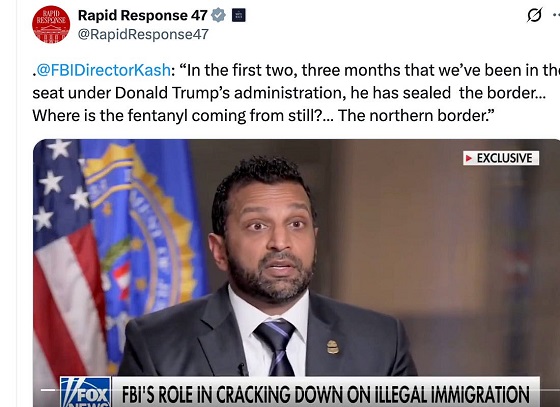
 Sam Cooper
Sam Cooper
Patel’s warning echoes The Bureau’s exclusive reporting on a criminal convergence linking CCP-backed chemical suppliers, Iranian proxies, and Mexican cartels operating through Vancouver superlabs
In an explosive Sunday interview that will place tremendous pressure on Prime Minister Mark Carney’s new Liberal government, FBI Director Kash Patel alleged that Mexican cartels, Chinese Communist Party operatives, and Iranian threat actors have forged a new axis of criminal cooperation, using Canada’s porous northern border and the Port of Vancouver—not the southern Mexican border—as their preferred entry point to flood fentanyl and terror suspects into the United States.
“In the first two, three months that we’ve been in the seat under Donald Trump’s administration, he has sealed the border,” Patel told Fox News’ Maria Bartiromo. “He has stopped border crossings. So where’s all the fentanyl coming from? Still? Where’s the trafficking coming from still? Where are all the narco traffickers going to keep bringing this stuff into the country? The northern border. Our adversaries have partnered up with the CCP and others—Russia, Iran—on a variety of different criminal enterprises. And they’re going and they’re sailing around to Vancouver and coming in by air.”
Patel asserted that adversarial regimes—including Beijing and Tehran—are now working in tandem on “a variety of different criminal enterprises,” and exploiting what he called the “sheer tyranny of distance” on America’s northern frontier, where vast terrain and lax enforcement in Canada have allegedly enabled fentanyl pipelines and terrorist infiltration.
Pointing directly at Carney’s government, Patel continued:
“Now we’re focused on it and we’re calling our state and local law enforcement partners up [at the northern border]. But you know, who has to get to step in is Canada—because they’re making it up there and shipping it down here.”
The FBI director’s warning—posted on the White House’s X account— follows exclusive reporting by The Bureau and a newly released 2025 threat assessment from the U.S. Drug Enforcement Administration, which, for the first time, officially flags Canada as an emerging threat node in the North American drug supply chain.
As The Bureau reported earlier this week, the DEA highlighted the dismantling of a fentanyl “super laboratory” in October 2024 in Falkland, British Columbia—a mountainous corridor between Vancouver and Calgary—as an emerging threat in fentanyl trafficking targeting the United States. Sources pointed to the same converged threat network—China, Iran, and Mexico—mentioned today by FBI Director Kash Patel.
“According to these sources,” The Bureau reported Friday, “the site forms part of a broader criminal convergence involving Chinese, Mexican, and Iranian networks operating across British Columbia, Alberta, Saskatchewan, Manitoba, Ontario, and Quebec. The Bureau’s sources indicate that the Falkland facility was connected to Chinese chemical exporters sanctioned by the United States Treasury, Iranian threat actors, and operatives from Mexican drug cartels.”
In his remarks today, Patel appeared to directly link this criminal convergence to terrorist infiltration.
“And I’ll give you a statistic that I gave to Congress that nobody was paying attention to,” Patel added. “Over 300 known or suspected terrorists crossed into this country last year, illegally… 85 percent of them came in through the northern border.”
Patel also appeared to turn up the political pressure on Ottawa, alluding to President Trump’s recent controversial statements about Canada—which became a flashpoint in the federal election, with many voters embracing the Liberal Party’s campaign framing Carney as a bulwark against Trump.
“I don’t care about getting into this debate about making someone the 51st state or not,” Patel said, referencing Trump’s remarks. “But [Canada] are a partner in the north. And say what you want about Mexico—but they helped us seal the southern border. But facts speak for themselves. It’s the [northern] border that’s open.”
The Bureau will continue to follow this story in the coming week.
The Bureau is a reader-supported publication.
To receive new posts and support my work, consider becoming a free or paid subscriber.
Invite your friends and earn rewards
-

 Business1 day ago
Business1 day agoBreaking: Explosive FBI Warning—CCP, Iran, and Mex-Cartels Partnering in Canada to Move Fentanyl and Terrorists Into U.S.
-
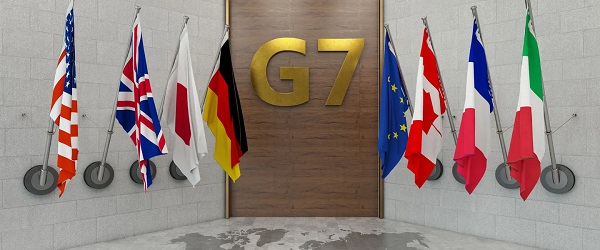
 Business2 days ago
Business2 days agoCanada’s finances deteriorated faster than any other G7 country
-
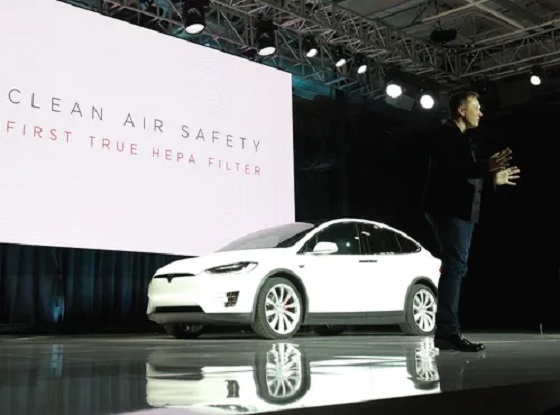
 Automotive1 day ago
Automotive1 day agoTesla stock soars for fourth straight week on Musk Play plan, board shake-up
-
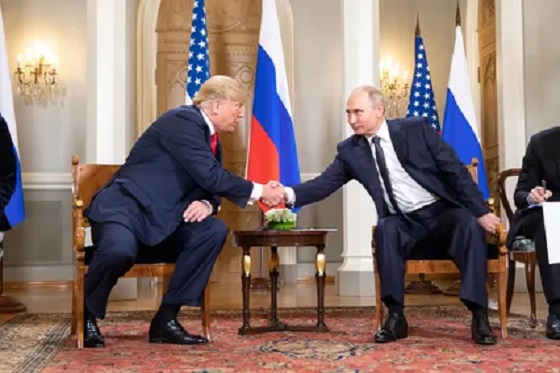
 conflict1 day ago
conflict1 day agoUkraine War may see breakthrough as Trump sets up Monday Morning call with Putin
-

 Automotive14 hours ago
Automotive14 hours agoCanada’s electric vehicle industry faces multiple threats
-
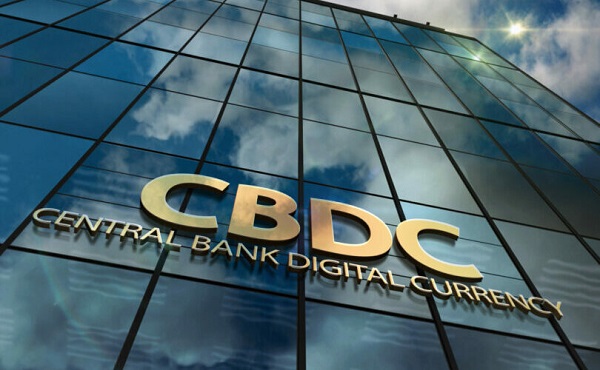
 Banks2 days ago
Banks2 days agoInternational Monetary Fund paper suggests CBDCs could turn society cashless
-
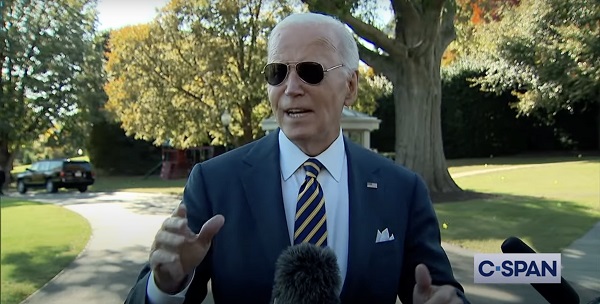
 Daily Caller14 hours ago
Daily Caller14 hours agoJoe Biden Diagnosed With ‘Aggressive’ Prostate Cancer
-
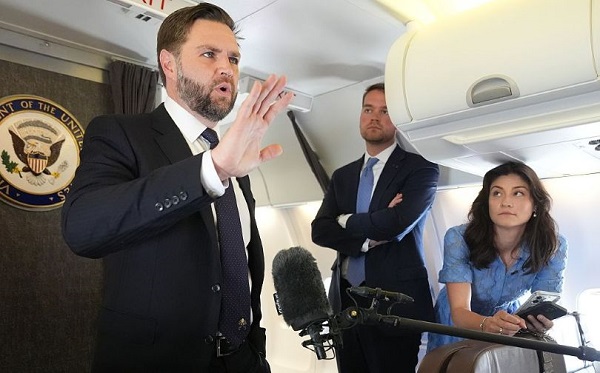
 International7 hours ago
International7 hours agoPope Leo XIV meets with JD Vance, Marco Rubio following pontiff’s opening Mass

